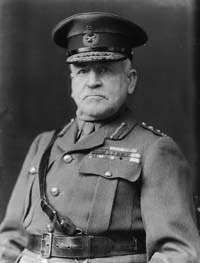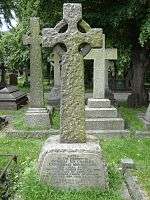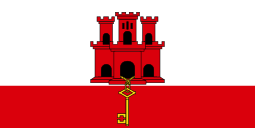Sir Charles Monro, 1st Baronet
| Sir Charles Monro, Bt | |
|---|---|
 | |
| Born |
15 June 1860 At sea on the Maid of Judah |
| Died |
7 December 1929 (aged 69) Westminster, London, England, United Kingdom |
| Allegiance | United Kingdom |
| Service/branch | British Army |
| Years of service | 1878–1920 |
| Rank | General |
| Unit | Queen's Royal Regiment (West Surrey) |
| Commands held |
13th Brigade 2nd London Division 2nd Division I Corps Third Army Mediterranean Expeditionary Force First Army Commander-in-Chief, India |
| Battles/wars |
Second Boer War First World War Third Anglo-Afghan War |
| Awards |
Baronet Knight Grand Cross of the Order of the Bath Knight Grand Cross of the Order of St Michael and St George Knight Grand Commander of the Order of the Star of India |
| Other work | Governor of Gibraltar |

General Sir Charles Carmichael Monro, 1st Baronet, GCB, GCSI, GCMG (15 June 1860 – 7 December 1929) was a senior British Army officer who served during the Second Boer War and the First World War and became Commander-in-Chief, India for the latter part of the conflict. From 1923 to 1929 he served as Governor of Gibraltar.
Early military career
Educated at Sherborne School and the Royal Military College, Sandhurst, Monro was commissioned into the 2nd Regiment of Foot as a second lieutenant on 13 August 1879.[1][2][3] He was promoted to lieutenant on 15 May 1881 and to captain on 24 July 1889.[4][5] Promoted to major on 23 February 1898,[6] he served as a brigade major until he was appointed a deputy assistant adjutant general on 15 April 1899.[7] He vacated that appointment in February 1900,[8] as he went to South Africa to serve in the Second Boer War, where he was present at the Battle of Paardeberg in 1900.[1] Promoted to temporary lieutenant-colonel in 1900, he was brevetted to lieutenant-colonel on 29 November 1900.[9] On 28 March 1903, he was promoted to the substantive rank of lieutenant-colonel and appointed commandant of the School of Musketry.[10][11] Promoted to colonel in 1906, he was appointed Commander of 13th Infantry Brigade in Dublin on 12 May 1907, with the temporary rank of brigadier-general.[1][12] Promoted to major-general on 31 October 1910, on 31 March 1912 he became General Officer Commanding 2nd London Division.[13][14]
First World War
On 5 August 1914, at the start of the First World War, Monro was deployed to France as General Officer Commanding 2nd Division and played an important part in the First Battle of Ypres.[1][15] On 27 December 1914 he became General Officer Commanding I Corps, with the temporary rank of lieutenant-general.[16] On 15 July 1915, he was made General Officer Commanding Third Army, with the temporary rank of general.[1][17] He was promoted to the permanent rank of lieutenant-general on 28 October.[18] In October 1915, during the later stages of the Gallipoli Campaign, General Ian Hamilton was dismissed as Commander-in-Chief of the Mediterranean Expeditionary Force and replaced by Charles Monro.[1] Monro subsequently ordered the evacuation of troops from Gallipoli.[1]
In 1916 Monro briefly commanded the British First Army in France before becoming Commander-in-Chief India later that year.[1] As Commander-in-Chief, India Monro had responsibility for the Mesopotamian campaign. Robertson told him to “keep up a good show” (1 August 1916) in Mesopotamia but not to make any further attempt to take Baghdad, but this was overruled by Curzon and Chamberlain on the War Committee. Monro inspected Maude’s forces on his way out to India, and after receiving his favourable report the War Committee authorised Maude to attack (18 September 1916).[19] On 1 October 1916, Monro was promoted to the substantive rank of general as a reward for his wartime service.[20]
Later life
In May 1921, Monro was created a Baronet, of Bearcrofts in the Shire of Stirling.[21] In 1923 Monro was appointed Governor of Gibraltar.[1] Monro died in 1929 and is buried in Brompton Cemetery, London.[22] His baronetcy became extinct upon his death.
Honours
British
- Knight Grand Cross of the Order of St. Michael and St. George (GCMG): 1 January 1916[23]
- Knight Grand Cross of the Order of the Bath (GCB): 1 January 1919[24] (KCB: 18 February 1915;[25] CB: 1906 Birthday Honours[26])
- Knight Grand Commander of the Order of the Star of India (GCSI): 3 June 1919[27]
- Baronet of Bearcrofts in the Shire of Stirling: 12 May 1921[21]
Others
- Grand Officer of the Legion of Honour of France: 10 September 1915[28]
- Grand Cordon of the Order of the Rising Sun of the Empire of Japan: 17 May 1919[29]
References
- 1 2 3 4 5 6 7 8 9 Sir Charles Monro at Oxford Dictionary of National Biography
- ↑ Barrow, Gen. Sir George (1931). "The Life of General Sir Charles Carmichael Monro". London: Hutchinson & Co.
- ↑ The London Gazette: no. 24751. p. 4900. 12 August 1879. Retrieved 10 March 2015.
- ↑ The London Gazette: no. 25007. p. 4347. 23 August 1881. Retrieved 10 March 2015.
- ↑ The London Gazette: no. 25970. p. 4787. 3 September 1889. Retrieved 10 March 2015.
- ↑ The London Gazette: no. 26941. p. 1118. 22 February 1898. Retrieved 10 March 2015.
- ↑ The London Gazette: no. 27074. p. 2629. 25 April 1899. Retrieved 10 March 2015.
- ↑ The London Gazette: no. 27164. p. 1002. 13 February 1900.
- ↑ The London Gazette: no. 27306. p. 2705. 19 April 1901. Retrieved 10 March 2015.
- ↑ The London Gazette: no. 27546. p. 2618. 24 April 1903. Retrieved 10 March 2015.
- ↑ The London Gazette: no. 27551. p. 2987. 12 May 1903. Retrieved 10 March 2015.
- ↑ The London Gazette: no. 28024. p. 3593. 24 May 1907. Retrieved 10 March 2015.
- ↑ The London Gazette: no. 28433. p. 7908. 4 November 1910. Retrieved 10 March 2015.
- ↑ The London Gazette: no. 28600. p. 2792. 19 April 1912. Retrieved 10 March 2015.
- ↑ The London Gazette: (Supplement) no. 28921. p. 7787. 29 September 1914. Retrieved 10 March 2015.
- ↑ The London Gazette: (Supplement) no. 29048. p. 785. 22 January 1915. Retrieved 10 March 2015.
- ↑ The London Gazette: (Supplement) no. 29267. p. 8247. 17 August 1915. Retrieved 10 March 2015.
- ↑ The London Gazette: (Supplement) no. 29341. p. 10615. 26 October 1915. Retrieved 10 March 2015.
- ↑ Woodward, 1998, pp118-9
- ↑ The London Gazette: (Supplement) no. 30129. p. 5850. 12 June 1917. Retrieved 10 March 2015.
- 1 2 The London Gazette: no. 32323. p. 3846. 13 May 1921. Retrieved 10 March 2015.
- ↑ Brompton Cemetery List of notable occupants
- ↑ The London Gazette: (Supplement) no. 29507. p. 2872. 14 March 1916. Retrieved 10 March 2015.
- ↑ The London Gazette: (Supplement) no. 31097. p. 81. 31 December 1918. Retrieved 10 March 2015.
- ↑ The London Gazette: (Supplement) no. 29074. p. 1686. 16 February 1915. Retrieved 10 March 2015.
- ↑ The London Gazette: (Supplement) no. 27926. p. 4460. 26 June 1906. Retrieved 10 March 2015.
- ↑ The London Gazette: (Supplement) no. 31379. p. 7046. 30 May 1919. Retrieved 10 March 2015.
- ↑ The London Gazette: no. 29290. p. 8986. 10 September 1915. Retrieved 10 March 2015.
- ↑ The London Gazette: (Supplement) no. 31345. p. 6208. 16 May 1919. Retrieved 10 March 2015.
Further reading
| Wikimedia Commons has media related to Sir Charles Monro. |
| Wikiquote has quotations related to: Charles Monro |
- Crowley, Patrick. "Loyal to Empire: The Life of General Sir Charles Monro, 1860–1929", Stroud, United Kingdom: The History Press, 2016, ISBN 9780750965996
- Woodward, David R. "Field Marshal Sir William Robertson", Westport Connecticut & London: Praeger, 1998, ISBN 0-275-95422-6
-
 Chisholm, Hugh, ed. (1922). "Monro, Sir Charles Carmichael". Encyclopædia Britannica (12th ed.). London & New York.
Chisholm, Hugh, ed. (1922). "Monro, Sir Charles Carmichael". Encyclopædia Britannica (12th ed.). London & New York.
| Military offices | ||
|---|---|---|
| Preceded by Henry Lawson |
General Officer Commanding the 2nd Division August 1914 – December 1914 |
Succeeded by Henry Horne |
| Preceded by Douglas Haig |
GOC I Corps December 1914 – July 1915 |
Succeeded by Hubert Gough |
| Preceded by New creation |
Commander of the British Third Army July 1915 – September 1915 |
Succeeded by Sir Edmund Allenby |
| Preceded by Sir John Maxwell |
General Officer Commanding the British Troops in Egypt October 1915 – January 1916 |
Succeeded by Sir Archibald Murray |
| Preceded by Sir Ian Hamilton |
Commander of the Mediterranean Expeditionary Force October 1915 – January 1916 | |
| Preceded by Sir Henry Rawlinson |
Commander of the British First Army January 1916 – October 1916 |
Succeeded by Sir Henry Horne |
| Preceded by Sir Beauchamp Duff |
Commander-in-Chief, India 1916–1920 |
Succeeded by The Lord Rawlinson |
| Preceded by Sir Edward Hamilton |
Colonel of the Queen's Royal Regiment (West Surrey) 1920–1929 |
Succeeded by Sir Wilkinson Bird |
| Preceded by B. T. L. Thomson |
Honorary Colonel of the 23rd London Regiment 1922–1928 |
Succeeded by The Lord Astor of Hever |
| Government offices | ||
| Preceded by Sir Horace Smith-Dorrien |
Governor of Gibraltar 1923–1928 |
Succeeded by Sir Alexander Godley |
| Baronetage of the United Kingdom | ||
| Preceded by New creation |
Baronet (of Bearcrofts) 1920–1929 |
Succeeded by Extinct |
| Heraldic offices | ||
| Preceded by Sir George Callaghan |
King of Arms of the Order of the Bath 1920–1929 |
Succeeded by Sir William Pakenham |

